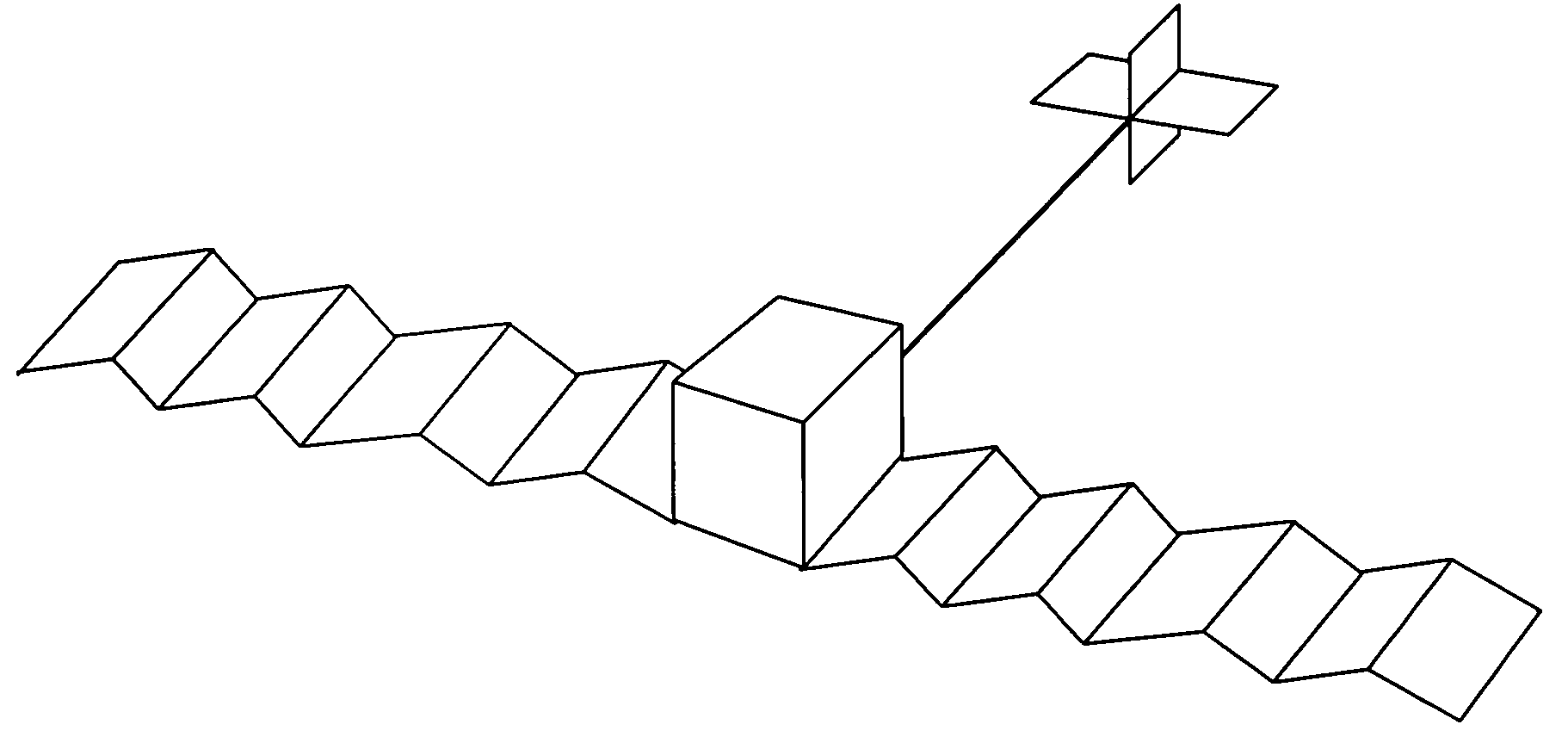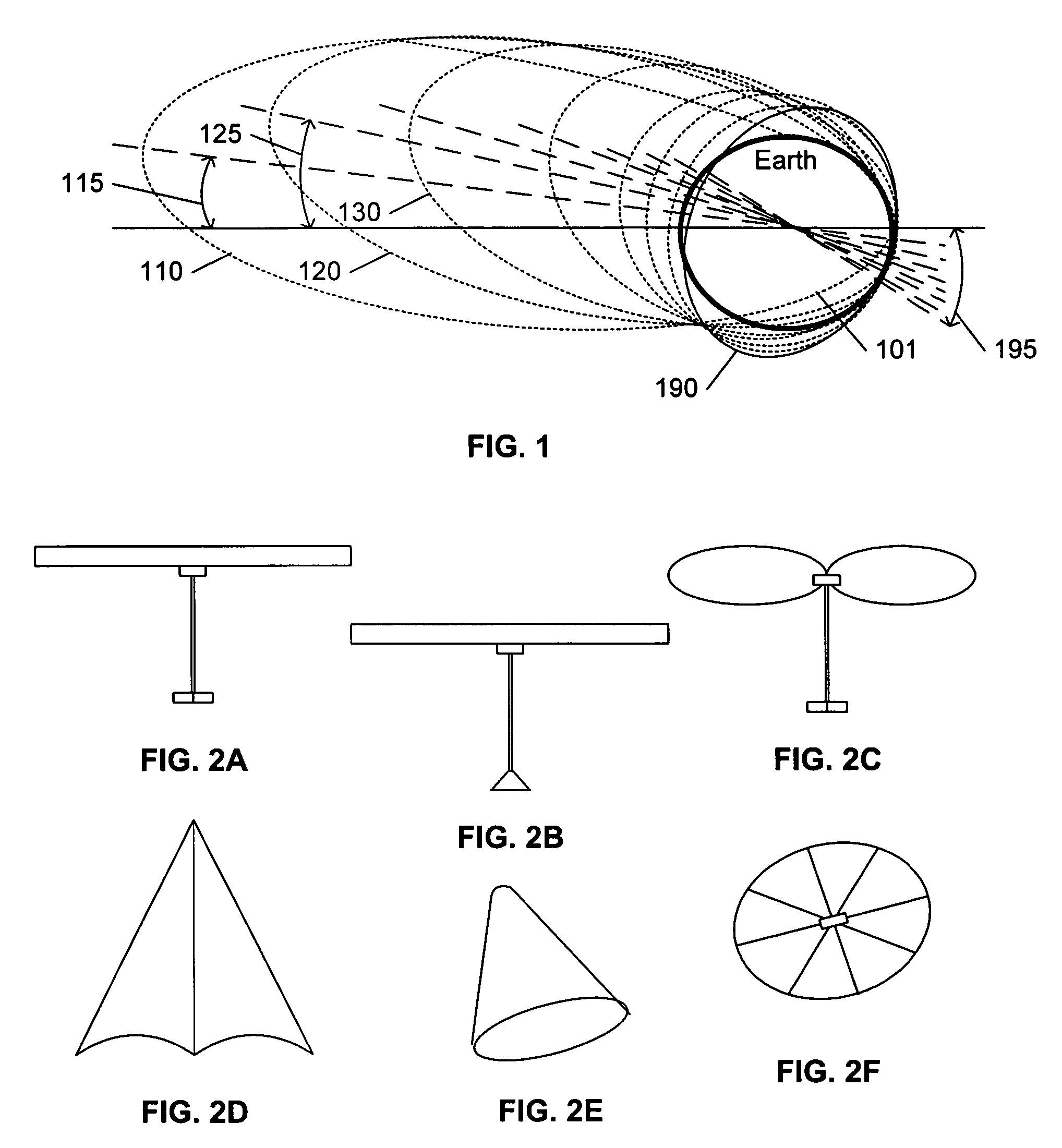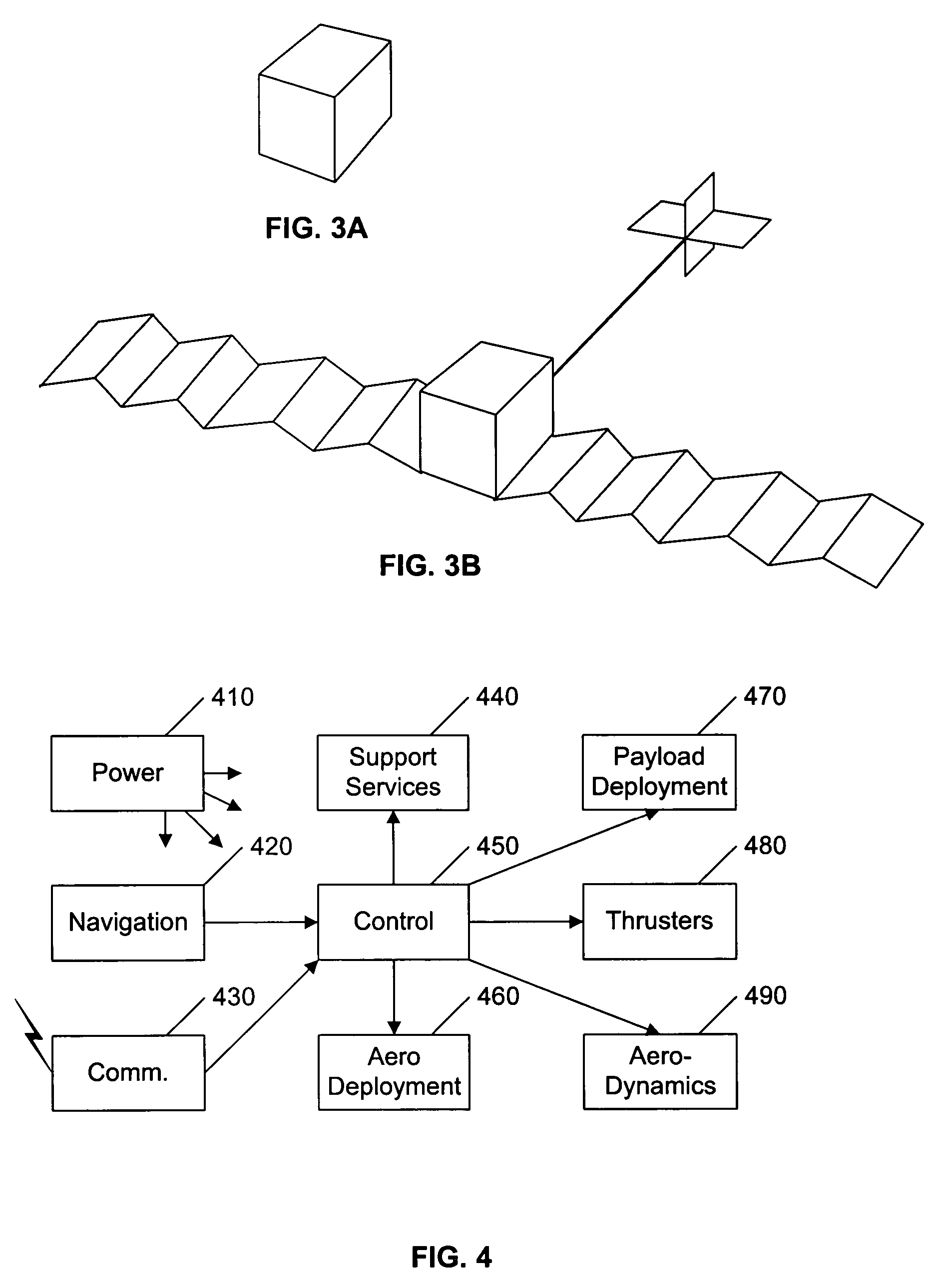Aerodynamic orbit inclination control
a technology of inclination control and orbit, applied in the field of aerodynamic orbit inclination control, can solve the problems of limited ability of conventional propulsion systems to effect major inclination angle changes, and achieve the effects of reducing the amount of fuel, and different orbit inclination angles
- Summary
- Abstract
- Description
- Claims
- Application Information
AI Technical Summary
Benefits of technology
Problems solved by technology
Method used
Image
Examples
Embodiment Construction
[0014] The invention is presented using the paradigm of a conventional launch of an orbit transfer vehicle into a geosynchronous orbit (GEO) and a subsequent maneuvering of the orbit transfer vehicle into a target low earth orbit (LEO) at a given inclination angle. However, one of ordinary skill in the art will recognize that the invention is not limited to this example. For example, in surveillance or other applications, the transfer vehicle may remain at a high-energy orbit indefinitely, and then employ the techniques of this invention to maneuver to a target inclination in order to overpass select regions of the earth when a need arises, and remain there until a new need arises. Each maneuver results in a lower-energy orbit, but this as-needed maneuvering can be repeated until the energy is insufficient to provide the desired amount of inclination change. Similarly, propulsion systems can be provided to offset and / or restore the loss of orbit energy. In like manner, although the ...
PUM
 Login to View More
Login to View More Abstract
Description
Claims
Application Information
 Login to View More
Login to View More - R&D
- Intellectual Property
- Life Sciences
- Materials
- Tech Scout
- Unparalleled Data Quality
- Higher Quality Content
- 60% Fewer Hallucinations
Browse by: Latest US Patents, China's latest patents, Technical Efficacy Thesaurus, Application Domain, Technology Topic, Popular Technical Reports.
© 2025 PatSnap. All rights reserved.Legal|Privacy policy|Modern Slavery Act Transparency Statement|Sitemap|About US| Contact US: help@patsnap.com



